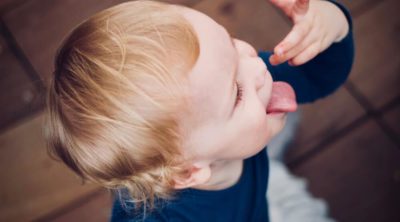
Faced with numerous choices, choosing the right baby bottle can be a tiresome task for any parent. Babies are extremely choosy about their feeding bottles, and finding the perfect one can take some time. Read this article for some helpful tips.
Did You Know?
The use of bisphenol A (BPA) in baby bottles and sippy cups was banned by the U.S. Food and Drug Administration in July 2012.
Buying a baby bottle seems like such a simple thing. All you need to do is go to a baby store, pick a bottle, and pay for it. How we wish the life of a parent was that simple. With the tons of baby bottle brands in the market, choosing the right one for the child can be confusing to say the least. Some are designed to prevent colic, while others are specially made for babies who have difficulty in sucking. The choices and the types are enough to confuse any parent. To top it all, there is always the problem of the baby’s preference as well. Some babies love a particular brand and will readily take to a particular nipple or bottle, while refuse another brand outright.
So, how do you choose the right bottle for your child? Should you opt for a glass bottle or a plastic one? Do you need to buy special baby bottle nipples or should you just stick to the ones that are sold as a set with the bottle? If the seemingly endless choices are making your head spin, then this AptParenting article provides some simple tips to make your choice easy.
Baby Bottle Buying Guide
Size and Shape of Bottle

Most of us have the notion that baby bottles are narrow and straight. However, if you have ever been to a baby store to buy a baby bottle, you would realize the plethora of variety out there. From the classic, standard bottles with straight or slightly curved sides to weird, curved bottles, there are many different sizes and shapes to choose from.
Straight-neck and Wide-mouth Baby Bottles
Of course, the standard, straight bottles in glass or plastic, remain an all-time favorite. Not only are they easier to hold and clean, but they can also be used with a breast pump. However, the main problem with their design is the intake of air during feeding, which in turn, leads to colic. Some straight-neck baby bottles have anti-vacuum function to reduce the discomfort of gas.
Narrow baby bottles can be quite difficult to clean. To surmount this problem, some manufactures offer short bottles with a wide neck. Apart from being easier to clean, these bottles work well for babies who constantly switch between breastfeeding and bottle feeding. First Year’s GumDrop Wide-neck Bottle and the Tommee Tippee Added Comfort Feeding Bottle are good choices for people who like the wide-neck baby bottle design.
Angled-neck Bottles
These bottles are bent at the neck to allow the milk to collect at the bottle’s nipple end, thus preventing intake of air. The shape also helps in preventing the fluid from collecting in the baby’s ear canals, which can lead to ear infections. These bottles are, however, quite difficult to fill and clean. A good angled-neck baby bottle is the Playtex VentAire Bottles.
When choosing the size of the bottle, look for a 4-ounce bottle for a smaller baby who probably does not need too much milk at a time. Switch to 8- or 9-ounce bottles as the child grows up.
Material

Previously, only glass was used, but with time, plastic bottles have become hugely popular. Since they do not deteriorate, are unbreakable, and are easy to clean, plastic bottles are all-time favorites. However, recent studies have found harmful chemicals in plastic bottles, particularly the presence of Bisphenol-A, also known as BPA. This chemical is linked with hormonal changes and certain maladies like cancer. In 2012, the use of this chemical for manufacturing plastic bottles was banned. However, there are many baby bottles that are not BPA-free. Avoid old, hand-me-downs, or secondhand plastic bottles, as they contain BPA. Stick to glass or BPA-free plastic baby bottles for your child.
Apart from glass and plastic, some manufacturers have also come up with some amazing stainless-steel bottles that are durable, easy to clean, and are BPA-free. The Pura Kiki Stainless Steel Bottle is a great alternative for your child.
Bottle Nipple Shape and Flow Rate

There are a wide range of bottles with different shapes, flow rates, and materials. You can choose clear, heat-resistant silicon nipples or opt for brown, soft latex nipples that provide better suction. There are also a wide range of nipple shapes to choose from. You can select from traditional, bell-shaped nipples that have thinner base and tip, orthodontic nipples that are elongated and indented in the center, and naturally-shaped nipples with a wide base. Multi-flow nipples provide the flexibility of changing the flow rate to slow, medium or fast flow.
A good bottle should be compatible with a wide range of spouts and nipples so that you can try different nipple sizes to find one that works best for your baby.
Ease of Cleaning

Although this may not be on your list of priorities, you need to understand that a baby bottle needs to be cleaned after every use. Usually, wide-mouth baby bottles are easier to clean than the narrow ones. Cleaning can also be extremely time-consuming if the bottle has small parts that need to be taken apart while cleaning. Choosing a dishwasher-safe baby bottle makes the task really easy.
To avoid washing, you can get drop-in bottle liners, which are essentially disposable plastic bags that fit inside some bottle systems, and lets you avoid the concern of plastics chemicals leaching into baby’s meal. However, these inserts can be quite costly and may not be environmentally sound.
Other Things to Consider
Look for bottles with anti-colic features. For example: Baby bottles, such as Adiri NxGen Nurser, have a special bottom vent system to help reduce colic.
If you are transitioning from breastfeeding to bottle feeding, then it is a great idea to look for special breastfeeding bottles with special features that requires babies to use the same sucking motion used when breastfeeding in order to create a vacuum to release milk. Some popular breastfeeding baby bottles in the market are: Comotomo Baby Bottles, The First Years Breastflow Bottle, and Adiri NxGen Nurser.
If you are using glass bottles, then make the bottles shock-resistant by adding silicone sleeves. These colorful sleeves provide an excellent grip for little hands and cushions the occasional drop.
If you travel a lot, then look for bottles with anti-leak features such as a special disc or seal to prevent leakages.
Look for innovative features. The Mixie Formula-Mixing Baby Bottleallows you to add water to the bottle, and load the formula in a separate compartment. When it is time to feed, just press a button to release the formula into the bottle.
Certain bottles allow you to attach handles that turn them into sippy cups. This allows an older baby to feed himself. The ThinkBaby Bottle System allows you to transform the bottle to a sippy system with relative ease.
Along with baby bottles, you would also require accessories like bottle covers, six to seven baby bibs, bottle warmers, etc.
Best Baby Bottles
★ Tommee Tippee Closer to Nature
★ Philips AVENT Natural Bottle
★ Similac SimplySmart Baby Bottle
★ Playtex Drop-Ins Nursers
Baby bottles can cost anywhere between $2 – $30 a bottle! Resist the urge to hoard baby bottles, instead buy two to three bottles to check which one your baby likes best. Allow the baby to get used to the bottle and nipple, and don’t just throw it away just because the child does not like it the first time. If a certain set does not agree with the baby needs, then replace it with the one that your baby seems to prefer. Replace any plastic or glass bottle that is cracked or chipped.


